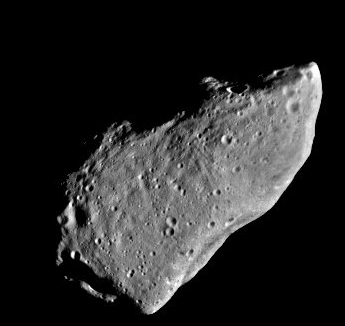Researchers will be “Gathering for Impact!” at the 2013 International Academy of Astronautics Planetary Defense Conference to be held April 15-19 at the High Country Conference Center.
The conference brings together world experts on subjects related to planetary defense, including what is currently known about potentially threatening asteroids and comets, techniques that might be used to deflect a threatening object and political and policy issues that might affect a decision to take action.
David Trilling, assistant professor of astronomy at Northern Arizona University, is the local organizer. As part of the conference, he said, an exercise will allow participants to develop civil protection and threat mitigation responses to a hypothetical threat.
And the threats are out there.
The Feb. 15 explosion of an incoming asteroid over in the Russian Urals injured more than 1,000 people from flying glass. But for the past 20 years astronomers have been studying the cosmic impact hazard, so they were prepared to react quickly to investigate this remarkable event.
The first scientific report on the Chelyabinsk Event preliminary findings will be presented at 7:30 p.m. April 14 in a discussion that is free to the public.
David Morrison of the SETI Institute in Mt. View, Calif., is organizing the discussion.
“The explosion over Chelyabinsk was a wake-up call to the continuing threat of cosmic projectiles,” Morrison said. “We all have a long-term stake in learning about these projectiles so that someday we will have the capability to discover objects before they collide and take necessary action to prevent a disaster.”
Three invited speakers at the pre-conference event are:
- David Kring (Lunar and Planetary Institute, Houston): A Geologic and Meteoritic Perspective of Impact Airbursts and Insights into the Chelyabinsk Event
- Peter Brown (University of Western Ontario): The Chelyabinsk Airburst: A Preliminary Overview of Observations
- Mark Boslough (Sandia National Lab, Albuquerque): Computational Simulations of Chelyabinsk and Tunguska Airbursts
At a second public event, at 7 p.m. Wednesday, April 17, Bill Nye The Science Guy will discuss planetary defense at NAU’s Prochnow auditorium.
Finally, a third public event has been added to the conference: a panel discussion of international experts discussing potential responses to the threat of near-Earth objects. The discussion takes place at 6 p.m. on Tuesday, April 16.



